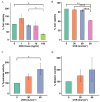Inhibition of Tyrosinase and Melanogenesis by a White Mulberry Fruit Extract
- PMID: 40806718
- PMCID: PMC12346983
- DOI: 10.3390/ijms26157589
Inhibition of Tyrosinase and Melanogenesis by a White Mulberry Fruit Extract
Abstract
Ultraviolet B (UVB) radiation is a key factor in the overproduction of melanin in the skin. Melanocytes produce melanin through melanogenesis to protect the skin from UVB radiation-induced damage. However, excessive melanogenesis can lead to hyperpigmentation and increase the risk of malignant melanoma. Tyrosinase is the rate-limiting enzyme in melanogenesis; it catalyzes the oxidation of tyrosine to 3,4-dihydroxy-L-phenylalanine and subsequently to dopaquinone. Thus, inhibiting tyrosinase is a promising strategy for preventing melanogenesis and skin hyperpigmentation. White mulberry (Morus alba L.) is rich in antioxidants, and mulberry fruit extracts have been used as cosmetic skin-lightening agents. However, data on the capacity of mulberry fruit extracts to inhibit tyrosinase under UVB radiation-induced melanogenic conditions remain scarce, especially in an in vivo model. In this study, we evaluated the effects of a mulberry crude extract (MCE) on UVB radiation-induced melanogenesis in B16F10 melanoma cells and zebrafish embryos. The MCE significantly reduced tyrosinase activity and melanogenesis in a dose-dependent manner without inducing cytotoxicity. These effects are likely attributable to the antioxidant constituents of the extract. Our findings highlight the potential of this MCE as an effective tyrosinase inhibitor for the prevention of UVB radiation-induced skin hyperpigmentation.
Keywords: B16F10 cells; UVB radiation; melanogenesis; mulberry crude extract; tyrosinase inhibition; zebrafish embryo.
Conflict of interest statement
The authors declare no conflicts of interest.
Figures





Similar articles
-
The in cellular and in vivo melanogenesis inhibitory activity of safflospermidines from Helianthus annuus L. bee pollen in B16F10 murine melanoma cells and zebrafish embryos.PLoS One. 2025 Jun 24;20(6):e0325264. doi: 10.1371/journal.pone.0325264. eCollection 2025. PLoS One. 2025. PMID: 40554513 Free PMC article.
-
Natural sources of melanogenic inhibitors: A systematic review.Int J Cosmet Sci. 2022 Apr;44(2):143-153. doi: 10.1111/ics.12763. Epub 2022 Feb 22. Int J Cosmet Sci. 2022. PMID: 35048395
-
Anti-Melanogenesis Activity of Peptides from Shark (Mustelus griseus) Skin on B16F10 Melanocytes and In vivo Zebrafish Models.Appl Biochem Biotechnol. 2025 Aug;197(8):5396-5410. doi: 10.1007/s12010-025-05296-z. Epub 2025 Jun 17. Appl Biochem Biotechnol. 2025. PMID: 40526244
-
Repurposing the Antibiotic D-Cycloserine for the Treatment of Hyperpigmentation: Therapeutic Potential and Mechanistic Insights.Int J Mol Sci. 2025 Aug 10;26(16):7721. doi: 10.3390/ijms26167721. Int J Mol Sci. 2025. PMID: 40869042 Free PMC article.
-
The melanin inhibitory effect of plants and phytochemicals: A systematic review.Phytomedicine. 2022 Dec;107:154449. doi: 10.1016/j.phymed.2022.154449. Epub 2022 Sep 6. Phytomedicine. 2022. PMID: 36126406
References
MeSH terms
Substances
Supplementary concepts
LinkOut - more resources
Full Text Sources
Miscellaneous

